Bobby
The decade of the Sixties evolved from the Camelot of the Kennedy administration to the emergence of Bobby Kennedy as the likely Democratic nominee for President in 1968. He ran on an anti-Vietnam war platform that built upon the earlier free speech movement. Because I was eligible for the draft, the protest against the war had more immediacy for me than the fight for racial justice and worker rights led by Dr. Martin Luther King, Jr. King’s assassination in the spring of 1968 affected my morale, but it made me more determined to fight for justice by campaigning for Bobby Kennedy.
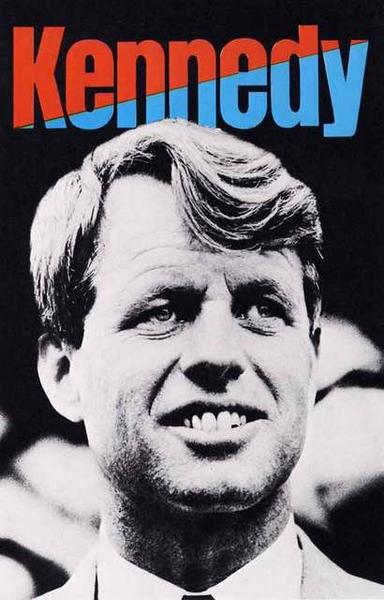
Like many of my friends, I handed out “Kennedy for President” materials at the local Safeway store just two blocks away at Live Oak and San Gabriel Boulevard. “Will you support Bobby?” I asked the mostly indifferent shoppers. Some were happily in agreement, but many were vociferously opposed, and made it known in threatening tones. The cars of these pro-war shoppers bore a bumper sticker with the snappy patriotic phrase—LOVE IT OR LEAVE IT. In my opposition to the war I too felt like a patriot .

Bobby’s assassination was absolutely devastating to me. I was at home with my dad on June 5, 1968 watching TV coverage of the speech at the Ambassador Hotel. I had even thought about driving downtown to get a glimpse of my hero. The TV brought the assassination by Sirhan Sirhan into our living room. Both my dad and I cried. I remember praying fervently for peace in the Kennedy family, peace among his followers, and guidance on how to personally move forward.
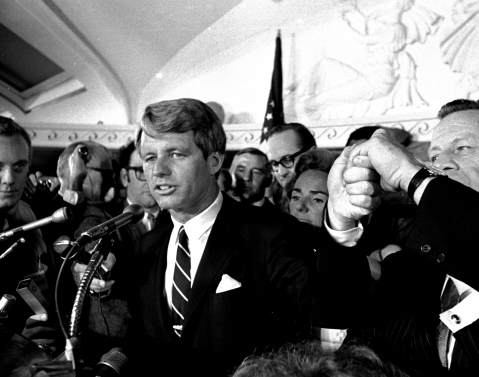
FILE – This June 5, 1968 file photo shows Sen. Robert F. Kennedy speaking at the Ambassador Hotel in Los Angeles, following his victory in the previous day’s California primary election. A moment later he turned into a hotel kitchen corridor and was critically wounded. (AP Photo/Dick Strobel, File)
After the devastation and disappointment of the assassination wore off, I became disillusioned by the political process. Like many young people in the late Sixties who were fed up and seeking another way, I turned inward in a direction that I still can’t explain fully. Why would someone like me, a typical child of America’s youth culture, decide to join the Mormon Church about one month after the assassination of Bobby? Why would I affiliate with a church so widely viewed as politically coopted by anti-communist pro war leaders, racist in its treatment of blacks by excluding them from the lay priesthood, and, like many Christian churches, emphasized that women’s place was in the home? My older sister was dumbfounded, and my parents were incredulous that I would join an “organized religion.” For them churches were merely social organizations.
I felt that many of these cultural markers could be changed, and that perhaps at the ground level of religion I could make a difference. As a newer religion, Mormon theology was evolving, especially with the belief in modern prophets who could declare a new way through revelation. I liked the idea my life could be empowered by personal inspiration. I wasn’t alone; there was a veritable Pentecost of Mormon membership in southern California. Many converts were displaced easterners who cut ties and moved to California for a new life.
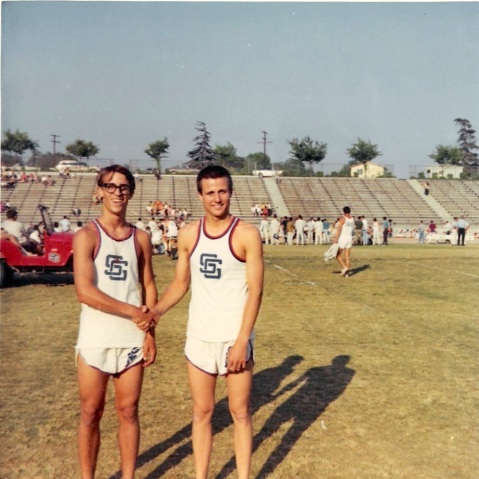
Tom with friend on the track team, San Gabriel High School, 1968
Part of the answer for my conversion was the social aspect of community. To my surprise many friends on my track team were members of The Church of Jesus Christ of Latter-day Saints (LDS for short). I became infatuated with a classmate named Claudia, and we became high school sweethearts. She was LDS and through her and her family I was fellowshipped into the LDS church. Her parents were good to me and answered many questions I had heard about the religion. I was able to make a distinction between people in the faith community and the doctrines that were at odds with my personal values. Not long after my baptism I served in the Cumorah Mission (upstate New York) for two years. Eventually, those doctrines were repudiated and the church became a vehicle for social justice on Chicago’s South Side where I served as a lay leader of a congregation from 1985-1991.
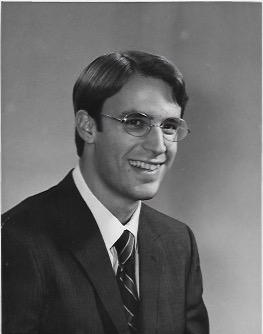
Elder Rugh, Cumorah Mission, 1969-1971
Fifty years ago I made the choice to become a Mormon, but throughout my life I have not limited my association to people of my own faith. It has been meaningful to talk with people through the years about their own religious heritage and background. As Nancy said, religious difference has not been a barrier for me in building relationships. I have tried to balance religious activity with other aspects of my life, as you can see in this humorous photo taken in the 1980s. I still believe in the motto: IT PAYS TO PRAY.
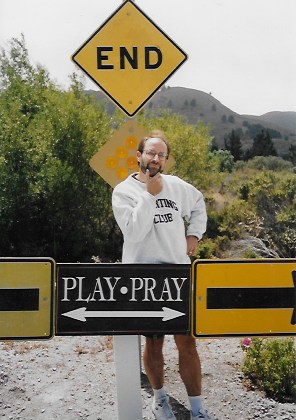
Seriously, every day I pray that each person will find a way to do good in their families and communities. Even though we have trials and troubles, there is always someone with problems greater than mine. The key is to find a way to make your own life happier and more meaningful.
In solidarity,
Tom
Salt Lake 20th Ward Fast – Welcome Ward Members
If you are visiting this blog after seeing it in the sacrament meeting program I want to say thank you. Bishop Bullough was kind enough to ask the ward to fast this coming Sunday. His words were very thoughtful, helpful and kind. I felt it was particularly inspired that the request came after we were blessed to hear how the youth of the Church are being raised to be upstanding Saints and representatives of the LDS faith.
Bishop Bullough asked specifically that the members fast for Tom, his wife and family, the doctors who will provide diagnosis, and the caretakers thereafter. His family across the US will be fasting for him as well as close friends. I’d also like to invite everyone who reads this blog to participate in the fast for Tom and those around him.
As Bishop Bullough mentioned, Tom will be traveling in the coming months to Los Angeles and Iowa CIty. He will be visiting the Cedars-Sinai Hospital to take part in their Carcinoid and Neuroendocrine Tumor Program. He will also visit the University of Iowa’s carcinoid specialists. We feel very blessed to have these opportunities and resources available.
I hope you continue to read and keep up with the blog. Please leave a note or message below if you feel so inclined.
Thank you,
Pete
Welcome
Tom is fighting a long term battle against carcinoid cancer. Your messages of solidarity give Tom the added vigor and determination to continue the fight. Thanks so much for your love and support.
If you would like more information about carcinoid cancer, click on the link below.
